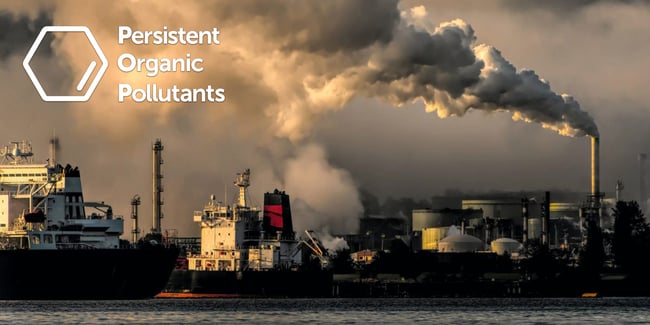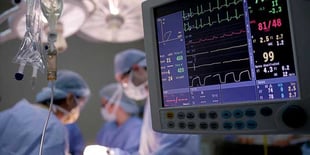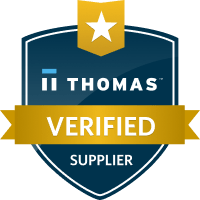Understanding Persistent Organic Pollutants (POPs)

Written by Miranda Campagna
Persistent Organic Pollutants (POPs) are a group of toxic chemicals known for their longevity in the environment, ability to bioaccumulate, and potential to cause adverse health effects in humans and wildlife. They are resistant to environmental degradation through chemical, biological, and photolytic processes, making them persistent.
Key Characteristics of POPs
-
Persistence:
- POPs resist breakdown processes, allowing them to remain in the environment for extended periods, often years or even decades. This persistence means they can accumulate in soil, water, and living organisms, creating long-term environmental and health risks.
- POPs resist breakdown processes, allowing them to remain in the environment for extended periods, often years or even decades. This persistence means they can accumulate in soil, water, and living organisms, creating long-term environmental and health risks.
-
Bioaccumulation:
- POPs can accumulate in the fatty tissues of living organisms. As organisms consume contaminated food or water, POPs build up in their bodies. Over time, higher concentrations of POPs can be found in organisms higher up the food chain, a process known as biomagnification.
- POPs can accumulate in the fatty tissues of living organisms. As organisms consume contaminated food or water, POPs build up in their bodies. Over time, higher concentrations of POPs can be found in organisms higher up the food chain, a process known as biomagnification.
-
Long-Range Transport:
- POPs can travel long distances from their original source through air and water currents. This ability to disperse widely means they can affect regions far from their point of release, including remote and pristine areas like the Arctic.
How POPs Enter and Move Through the Environment
-
Release and Emission:
- POPs can be released into the environment through various human activities, including industrial processes, agricultural practices, and the improper disposal of waste. Some are produced intentionally for use as pesticides or industrial chemicals, while others are byproducts of industrial processes or combustion.
- POPs can be released into the environment through various human activities, including industrial processes, agricultural practices, and the improper disposal of waste. Some are produced intentionally for use as pesticides or industrial chemicals, while others are byproducts of industrial processes or combustion.
-
Transport:
- Once released, POPs can travel through the atmosphere attached to dust particles or as gases. They can also enter water bodies through runoff or direct discharge, where they can be transported by rivers and oceans.
- Once released, POPs can travel through the atmosphere attached to dust particles or as gases. They can also enter water bodies through runoff or direct discharge, where they can be transported by rivers and oceans.
-
Deposition and Redistribution:
- POPs can deposit onto soil, water, and vegetation. They can be re-released into the atmosphere through evaporation or re-suspension of dust particles, creating a cycle of redistribution.
- POPs can deposit onto soil, water, and vegetation. They can be re-released into the atmosphere through evaporation or re-suspension of dust particles, creating a cycle of redistribution.
-
Bioaccumulation and Biomagnification:
- POPs enter the food chain when absorbed by plants and ingested by animals. As they move up the food chain, from prey to predator, their concentration increases, resulting in higher levels in top predators, including humans.
Health and Environmental Impacts of POPs
Human Health Effects:
- Reproductive and Developmental Issues: POPs can interfere with hormonal systems, leading to reproductive problems and developmental delays in infants and children.
- Cancer: Some POPs are known carcinogens, increasing the risk of cancers in exposed populations.
- Immune System Suppression: Exposure to POPs can weaken the immune system, making individuals more susceptible to infections and diseases.
- Neurological Effects: POPs can impact the nervous system, leading to cognitive impairments and behavioral changes.
Environmental Effects:
- Wildlife Health: POPs can cause reproductive failures, deformities, and behavioral changes in wildlife species. Predatory animals, such as birds of prey and marine mammals, are particularly vulnerable due to biomagnification.
- Ecosystem Imbalance: The accumulation of POPs can disrupt entire ecosystems by affecting the health and population dynamics of various species, leading to loss of biodiversity and altered ecosystem functions.
What Domestic Actions Have Been Taken to Control POPs?
The United States has implemented robust measures to control POPs domestically. None of the original POPs pesticides listed in the Stockholm Convention are registered for sale or distribution in the U.S. Additionally, Congress prohibited the manufacture of PCBs in 1978 and significantly restricted the use of existing stocks. The Environmental Protection Agency (EPA) and states have effectively reduced the release of dioxins and furans, leading to an 85% decline in total releases from industrial sources since 1987.
The Stockholm Convention
The Stockholm Convention, finalized in 2001, is a legally binding international agreement where participating governments committed to reducing or eliminating the production, use, and release of key POPs. This convention is crucial in addressing the global issue of POPs, adding new chemicals to the list over time through a rigorous scientific review process.
The Impact of the Stockholm Convention on Manufacturing Practices
The Stockholm Convention has significantly influenced manufacturing practices worldwide, driving industries to adopt safer and more sustainable methods. Here are some of the key impacts:
-
Reduction in Use of Harmful Chemicals:
- Many countries have phased out the production and use of the original "Dirty Dozen" POPs, such as PCBs and DDT. This has led to a decline in the availability of these toxic chemicals for industrial applications.
- Many countries have phased out the production and use of the original "Dirty Dozen" POPs, such as PCBs and DDT. This has led to a decline in the availability of these toxic chemicals for industrial applications.
-
Implementation of Cleaner Technologies:
- To comply with the Convention, industries have adopted cleaner technologies and processes that minimize the release of unintentional POPs like dioxins and furans. This includes improved waste management practices, the use of alternative materials, and the installation of pollution control devices.
- To comply with the Convention, industries have adopted cleaner technologies and processes that minimize the release of unintentional POPs like dioxins and furans. This includes improved waste management practices, the use of alternative materials, and the installation of pollution control devices.
-
Development of Alternatives:
- The Convention has spurred innovation in developing safer chemical alternatives. Research and development efforts are focused on finding substitutes for hazardous POPs that are less harmful to human health and the environment.
- The Convention has spurred innovation in developing safer chemical alternatives. Research and development efforts are focused on finding substitutes for hazardous POPs that are less harmful to human health and the environment.
-
Global Standards and Regulations:
- The Stockholm Convention has established global standards for the production, use, and disposal of POPs. Countries are required to implement national regulations that align with these standards, ensuring a consistent and coordinated approach to controlling POPs.
- The Stockholm Convention has established global standards for the production, use, and disposal of POPs. Countries are required to implement national regulations that align with these standards, ensuring a consistent and coordinated approach to controlling POPs.
-
Monitoring and Reporting:
- The Convention mandates regular monitoring and reporting of POPs emissions and concentrations. This has led to the establishment of extensive monitoring networks and databases that track the presence of POPs in the environment and their impact on human health.
- The Convention mandates regular monitoring and reporting of POPs emissions and concentrations. This has led to the establishment of extensive monitoring networks and databases that track the presence of POPs in the environment and their impact on human health.
-
Capacity Building and Technical Assistance:
- The Convention provides support for developing countries to build their capacity to manage POPs. This includes technical assistance, funding for pollution control projects, and training programs to improve regulatory and enforcement capabilities.
The "Dirty Dozen"
The initial list of 12 key POPs, often referred to as the "Dirty Dozen," includes:
- Aldrin¹
- Chlordane¹
- Dichlorodiphenyl trichloroethane (DDT)¹
- Dieldrin¹
- Endrin¹
- Heptachlor¹
- Hexachlorobenzene¹,²
- Mirex¹
- Toxaphene¹
- Polychlorinated Biphenyls (PCBs)¹,²
- Polychlorinated Dibenzo-p-dioxins² (dioxins)
- Polychlorinated Dibenzofurans² (furans)
¹ Intentionally produced. ² Unintentionally produced - result from some industrial processes and combustion.
What Has the United States Done to Address POPs Globally?
The United States has actively contributed to global efforts in addressing POPs by signing the regional protocol of the United Nations Economic Commission for Europe on POPs under the Convention on Long-Range Transboundary Air Pollution. Additionally, the U.S. has provided financial and technical support to international initiatives, including dioxin and furan release inventories in Asia and Russia, and the reduction of PCB sources in Russia.
Conclusion
Persistent Organic Pollutants are a global issue that requires a coordinated global response. Through domestic actions, international agreements, and continuous scientific research, significant progress has been made to reduce the impact of these harmful chemicals. The ongoing efforts under the Stockholm Convention and other international collaborations highlight the importance of collective action in protecting human health and the environment from the adverse effects of POPs.




